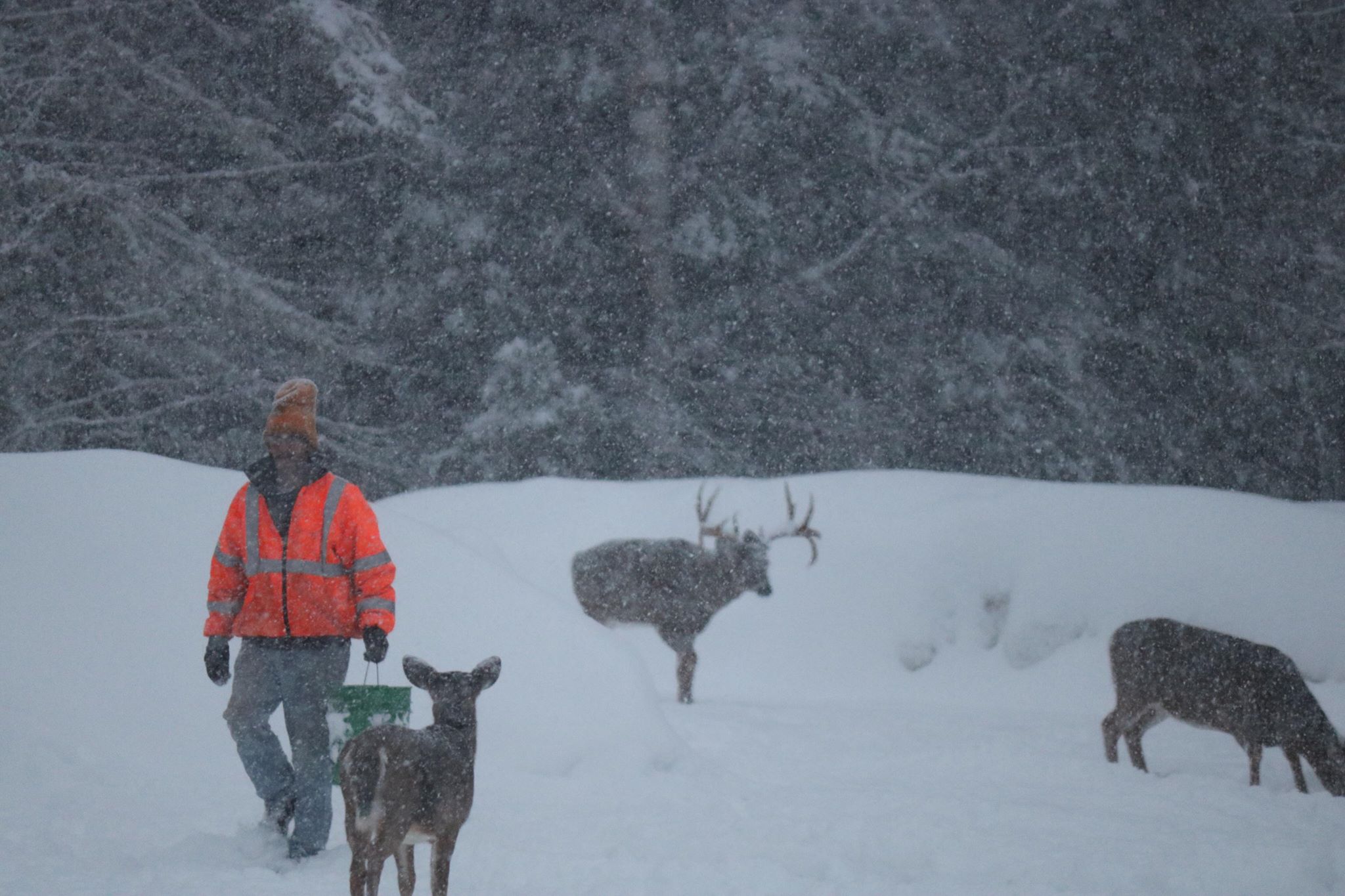
Spend a bit of time on social media, and you’re sure to find videos captioned with all kinds of bold claims.
But sometimes those claims — in this case, “a truly magnificent buck!” which appeared on the Facebook page of Tylor Kelly’s Camps in Allagash — are 100 percent accurate.
The video shows a male deer with a set of massive antlers. Sue Underhill Kelly, who took the video, said she has counted 13 points, but said there may actually be 14 points on the rack. The deer meanders slowly as heavy snow falls.
The video and subsequent photos Kelly shared aren’t the result of a chance encounter.
“The buck has shown up at Mark McBreairty’s house for the past several winters. He feeds the deer,” Kelly explained in an email. “The big guy lost one antler several days ago, but as of yesterday he was still holding on to the other one. Mark is hoping to find the sheds and sell them to offset what he spends on deer feed.”
The buck, which sports long droptines on each side, has turned into a bit of a local celebrity.
“Many people stop to get a glimpse of the big buck,” Kelly wrote. “A double droptine is most every hunter’s dream.”
Full disclaimer: State wildlife officials caution Mainers to avoid feeding deer for a variety of reasons, but feeding operations such as McBreairty’s are not uncommon.
Among the problems that may crop up if people feed deer, according to the Maine Department of Inland Fisheries and Wildlife:
— Feeding concentrates deer in smaller areas reducing size and effectiveness of trail networks.

A buck with an impressive set of antlers mills around at a deer-feeding operation run by Mark McBreairty in Allagash. (Courtesy of Sue Underhill Kelly)
— Concentrating deer in smaller areas can create a feeding ground for predators.
— Concentrating deer in smaller areas may increase their vulnerability to diseases such as Chronic Wasting Disease.
— May cause long-term impacts on deer behavior as they lose their wariness of people.
— Feeding sites can significantly increase deer/vehicle collisions.
— Winter feeding is expensive. One deer requires 2 to 5 pounds of feed per day, depending on the quality of feed.
This article originally appeared on www.bangordailynews.com.







